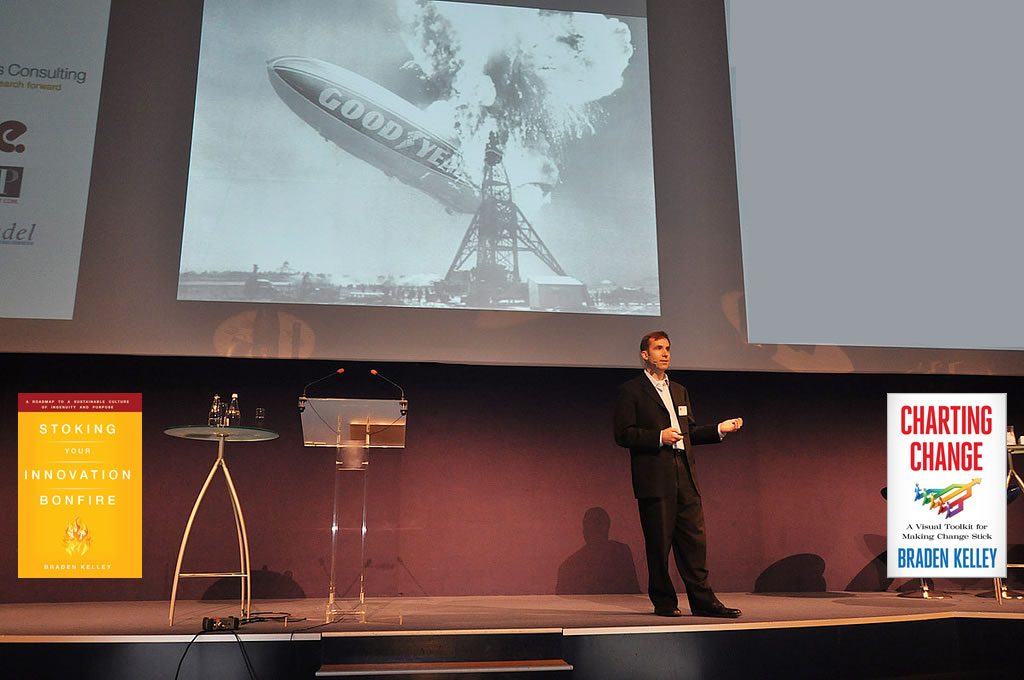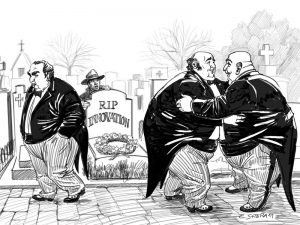Innovation Keynote Speakers are often misunderstood, maligned, and underutilized.
We have all been to many conferences, and heard many good (and bad) keynote and session speakers with a variety of styles (all of which are perfectly acceptable), including:
1. The Motivator
Say this public speaking style and most people will envision Bill Clinton, Tony Robbins, Steve Ballmer or someone like that. Notice that not all three examples are people you think of as full of boundless energy, that can be incredibly motivating. The motivator tries to connect on an emotional level with the audience and dial up the inspiration.
2. The Academic
This speaking style is nearly, but not completely synonymous with college professors and others in the “teaching” business. My personal style straddles between The Academic and The Storyteller. The Academic focuses on bringing compelling content and connecting with the intellect of the audience, bringing them tools and concepts that done well, are easy to grasp and use.
3. The Storyteller
The Storyteller makes a strong use of similes, metaphors, and stories to get their points across. Bill Clinton straddles the line between The Motivator and The Storyteller. Storytellers try to connect on an emotional level and along with The Academic, tend to dive deeper into their points than The Motivator or The Standup comedian. Personally I love good stories and funny pictures and so my personal T-shaped speaking style embraces bits of The Storyteller and The Standup Comedian as well.
4. The Standup Comedian
The Standup Comedian aims to keep the audience laughing, using humor to underscore and to make their points. Other than comedy writers or standup comedians, few speakers will rely on this as their primary style, but many will drift into this style from time to time.
As you might expect, all of these styles are perfectly valid as long as the content is solid and valuable, but the energy of The Motivator entices a lot of people and as you can imagine, this group does the most to both help and hurt people’s perceived value of keynote speakers. Sometimes The Motivator inspires people to action, and other times they are the equivalent of cotton candy, firing people up with weak content that they can’t do anything with.
So, if with public speaking, like other communication vehicles, content is king and all speaking styles are valid, then you need to find the right content, the right speaker, and have the right reasons for employing one.
With that in mind, let’s look at the…
Top 10 Reasons to Hire an Innovation Keynote Speaker
- To begin an honest dialog around the role of innovation in your organization’s future
- To help build/reinforce your common language of innovation
- To bring in fresh ideas to inspire fresh insights
- To bring additional perspectives to existing innovation conversations
- To lay the groundwork for building an innovation infrastructure
- To help reduce the fear of innovation in your organization
- To reinforce your commitment to innovation publicly to your employees
- To increase the energy for innovation in your company
- To inject fresh life into an existing innovation program
- To combine with an innovation workshop to build new innovation capabilities
Click the image to download as a PDF:
This is of course, not a comprehensive list of the reasons that companies around the world find value in periodically bringing in an innovation keynote speaker to dialog with their employees. Some companies choose to achieve some of these objectives via the innovation keynote, and others by sponsoring innovation training programs, or by retaining an innovation thought leader in an advisory capacity to provide the same kind of external perspectives, input, insights, and diversity of thought.
So, whether you are a new innovation leader seeking guidance on how to get off on the right foot, or an experienced Chief Innovation Officer, VP of Innovation, or Innovation Director, I encourage you to consider having myself or another innovation keynote speaker or workshop leader as a guest from time to time. I know you’ll find value in it!
![]() Sign up here to get Human-Centered Change & Innovation Weekly delivered to your inbox every week.
Sign up here to get Human-Centered Change & Innovation Weekly delivered to your inbox every week.





